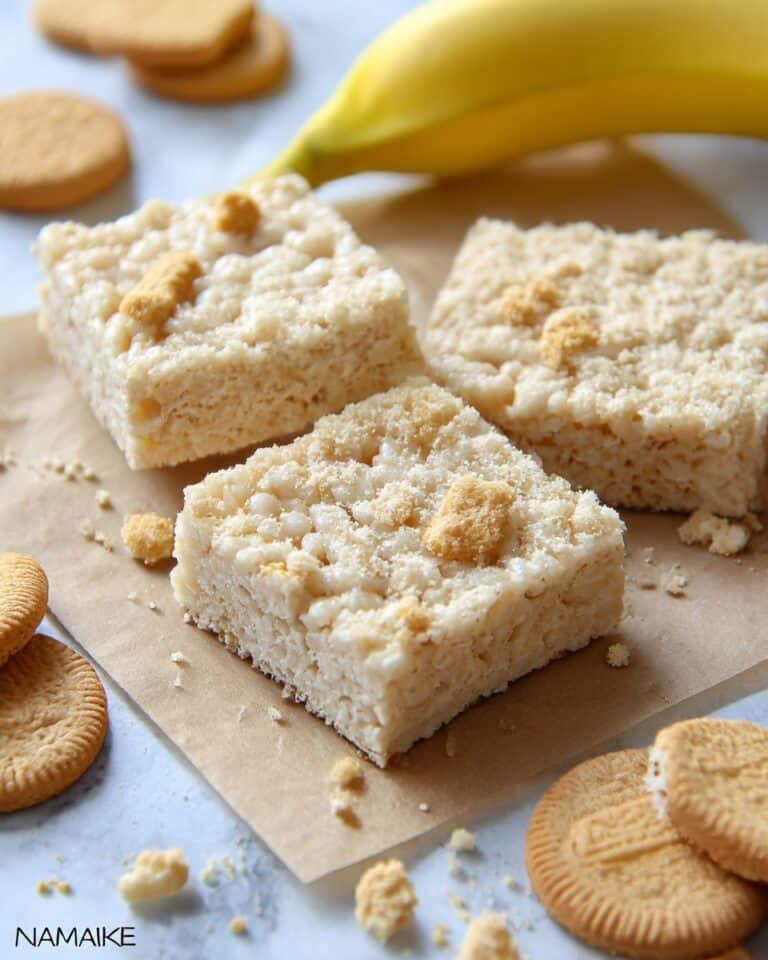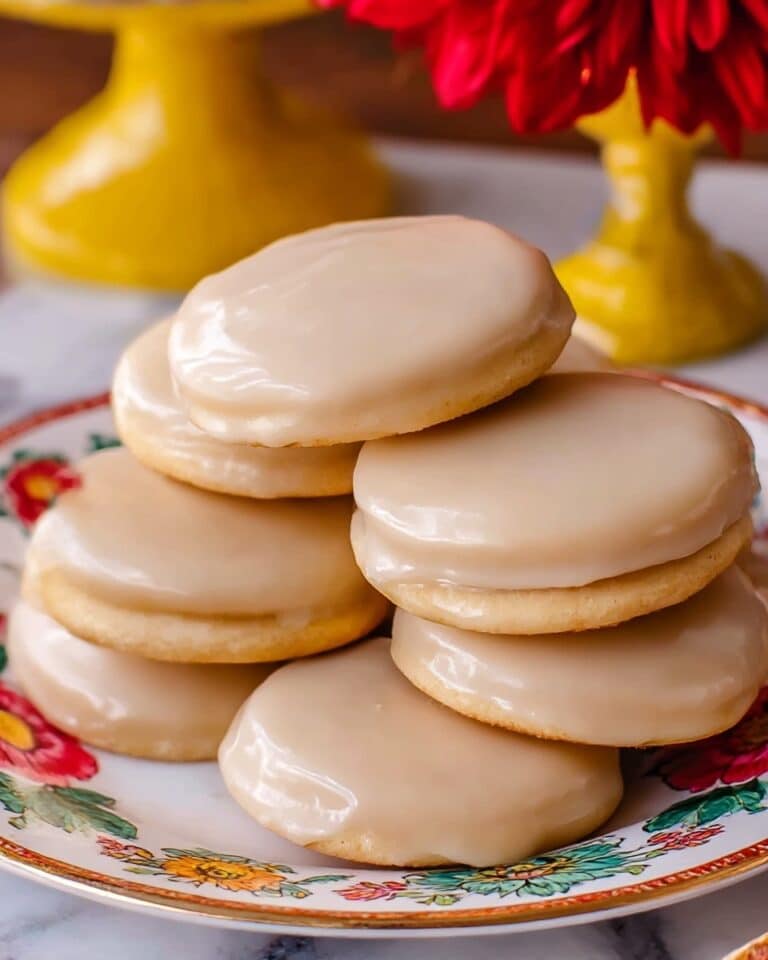Gluten-Free Beignets Recipe
If you’ve ever found yourself craving the pillowy, melt-in-your-mouth delight of traditional fried pastries but need to avoid gluten, then this Gluten-Free Beignets Recipe is here to sweep you off your feet. These beignets capture all the flaky, airy goodness of the classic New Orleans treat but made entirely without gluten, so everyone can enjoy their crispy golden exterior dusted with a generous snow of powdered sugar. From the very first bite, you’ll notice the perfect balance of a tender crumb and a light crunch, making these beignets absolutely irresistible for breakfast, dessert, or an anytime indulgence.

Ingredients You’ll Need
Don’t be fooled by the simplicity of this Gluten-Free Beignets Recipe; each ingredient plays a vital role in turning a sticky, soft dough into those wonderfully fluffy, golden pillows you adore. From the warm liquid activating the yeast to the gentle sweetness and the essential xanthan gum, these elements work harmoniously to achieve the perfect texture and flavor.
- ¾ cup warm milk (or water for dairy-free): The cozy warmth activates the yeast and hydrates the dough, setting the foundation for a good rise.
- 2 ¼ teaspoons active dry yeast: This magical leavening agent brings life and airiness to the beignets.
- ¼ cup granulated sugar, plus 1 teaspoon for proofing yeast: Adds a touch of sweetness and feeds the yeast during activation.
- 2 ½ cups high-quality gluten-free all-purpose flour blend: Ensures the right structure—make sure it contains xanthan gum, or add 1 teaspoon separately for elasticity.
- ½ teaspoon salt: Enhances all the flavors and balances the sweetness perfectly.
- 1 large egg, lightly beaten: Adds richness and helps bind the dough.
- 2 tablespoons unsalted butter, melted (or neutral oil): Brings moisture and tenderness to the dough.
- ½ teaspoon vanilla extract (optional): Adds a subtle fragrant note that elevates the flavor.
- 3–4 cups neutral oil for frying (vegetable, canola, or peanut): The hot oil crisps up the beignets to golden perfection.
- 1–2 cups powdered sugar for dusting: The final sweet dusting that makes these beignets a memorable treat.
How to Make Gluten-Free Beignets Recipe
Step 1: Proof the Yeast
Start by waking up your yeast with the warm milk (or water), a teaspoon of sugar, and the active dry yeast. Stir gently and let it rest for 5-10 minutes until the mixture is foamy and alive—a bubbly sign that your yeast is ready to work its magic. If it doesn’t foam, it’s best to start over, since this step ensures your beignets will puff up beautifully.
Step 2: Combine Dry Ingredients
In a separate bowl, whisk together your gluten-free flour blend, remaining sugar, and salt. If your flour blend lacks xanthan gum, sprinkle that in too—it’s critical for creating the dough’s elasticity and mimicking the chewiness found in traditional beignets.
Step 3: Mix Wet Ingredients
Once your yeast mixture is perfectly foamy, add the beaten egg, melted butter (or oil), and vanilla extract if you’re using it. Give it a quick whisk to marry these ingredients before bringing the wet and dry components together.
Step 4: Combine Wet and Dry
Gradually fold the flour mixture into your wet ingredients. If you’re using a stand mixer, a low-speed paddle attachment is ideal; if not, a sturdy spatula will do. Remember, this dough will be sticky and batter-like—resist the urge to add more flour, as that will compromise the light, airy nature of your final beignets.
Step 5: First Rise (Bulk Fermentation)
Cover your dough with plastic wrap or a kitchen towel, and tuck it away in a warm, draft-free spot. Give it 1 to 1.5 hours to rise until it’s noticeably fluffier. Gluten-free doughs behave a bit differently than traditional ones, so while it might not double in size, an expansion and airiness should be clear.
Step 6: Prepare for Shaping
After the rise, gently deflate the dough and lightly flour your work surface with gluten-free flour. Flip the dough out and dust the top and your hands lightly to prevent sticking. Take care with this delicate dough, handling it just enough to shape it without knocking out too much air.
Step 7: Shape the Beignets
Pat or gently roll the dough into a ½-inch thick rectangle. Using a floured pizza cutter or knife, slice into 2-inch squares or rectangles. You can gather scraps and gently reshape them to get a few more pieces, but keep the handling minimum to retain that fluff.
Step 8: Second Rise (Optional but Recommended)
Place your cut pieces spaced apart on a floured baking sheet and cover loosely with plastic or a kitchen towel. Let them rest in a warm spot for 20-30 minutes to puff slightly, boosting their ultimate fluffiness when fried.
Step 9: Heat the Oil
While your beignets are rising again, pour oil into a heavy-bottomed pot or Dutch oven, filling it about 2 to 3 inches deep. Heat to 350-360°F (175-180°C)—using a thermometer is your best friend here for perfect frying conditions.
Step 10: Fry the Beignets
Drop 3-4 pieces at a time into the hot oil, careful not to overcrowd. They’ll instantly puff up and take on a golden crisp within 1 to 2 minutes per side. Flip gently with a slotted spoon for even frying.
Step 11: Drain and Dust
Transfer the cooked beignets to a wire rack over paper towels to drain excess oil. While still warm, shower them in powdered sugar using a sifter or fine mesh sieve for that iconic sweet finish.
Step 12: Serve Immediately
These beignets are simply meant to be enjoyed right away, warm and tender with powdered sugar melting on each bite. Waiting too long can mean losing that light texture, so invite everyone to the table quickly!
How to Serve Gluten-Free Beignets Recipe

Garnishes
While powdered sugar is classic and divine, you can also dust with cinnamon sugar for a spiced twist or drizzle lightly with melted chocolate or caramel sauce to add decadence. Fresh berries alongside bring a fresh, tangy contrast that brightens each bite.
Side Dishes
Pair your beignets with a rich café au lait or a frothy latte—both complement the sweetness perfectly. For a more substantial breakfast, serve alongside fresh fruit salad or a dollop of homemade whipped cream to keep the experience light but satisfying.
Creative Ways to Present
For a charming brunch spread, stack the beignets pyramid-style on a pretty platter, dust heavily with powdered sugar, and tuck little bowls of dipping sauces like spiced honey, berry compote, or even lemon curd nearby. These touches turn a simple treat into a showstopper that friends and family will rave about.
Make Ahead and Storage
Storing Leftovers
If you’re lucky enough to have leftovers, place cooled beignets in an airtight container at room temperature for up to 1 day. For best texture, enjoy them fresh, as they begin to lose their airy quality after a day.
Freezing
You can freeze cooked beignets by wrapping them individually in plastic wrap, then placing them in a freezer-safe bag or container. They’ll keep well for up to one month and let you indulge whenever a sweet craving hits.
Reheating
To revive your frozen or day-old beignets, lightly warm them in a preheated oven at 350°F (175°C) for about 5-7 minutes. This refreshes the crispy outside while warming the inside without making them soggy, so you can enjoy a near-fresh escape any time.
FAQs
Can I make this Gluten-Free Beignets Recipe dairy-free?
Absolutely! Simply swap out the milk for warm water and replace melted butter with a neutral oil like vegetable or canola. The texture and flavor stay wonderfully close to the original.
Why is my dough too sticky to handle?
Gluten-free doughs are naturally stickier and softer than wheat-based ones, so a batter-like consistency is normal here. Lightly flouring your work surface and hands helps, but avoid adding extra flour to prevent dense beignets.
What is the best oil to use for frying beignets?
A neutral oil with a high smoke point, such as vegetable, canola, or peanut oil, is best. This ensures the beignets crisp nicely without imparting unwanted flavors.
Can I prepare the dough the night before?
Yes! You can complete steps 1 through 5, then cover and refrigerate the dough overnight. Bring it back to room temperature before shaping, allowing it a short second rise to activate the yeast again.
How can I tell when the oil is at the right temperature?
Using a deep-fry or candy thermometer is ideal for accuracy; target 350-360°F (175-180°C). If you don’t have one, test the oil by dropping in a small piece of dough—it should sizzle and bubble immediately without browning too quickly.
Final Thoughts
This Gluten-Free Beignets Recipe truly brings the joy of fresh, fluffy beignets to your kitchen without gluten worries. It’s a comforting, show-stopping treat I’m thrilled to share because nothing beats the smile on someone’s face after tasting a warm, sugar-dusted bite. Give it a whirl for your next brunch or sweet craving—your taste buds will thank you!
PrintGluten-Free Beignets Recipe
This Gluten-Free Beignets recipe offers a delightful twist on the traditional French treat, perfect for those avoiding gluten. Light, airy, and golden-fried squares dusted generously with powdered sugar, these beignets are soft on the inside with a crispy exterior. Using a high-quality gluten-free flour blend and a careful yeast fermentation process, this recipe achieves the classic pillowy texture everyone loves, with the added benefit of being gluten-free and dairy-free adaptable.
- Prep Time: 20 minutes
- Cook Time: 15 minutes
- Total Time: 1 hour 45 minutes
- Yield: About 20 beignets (2-inch squares) 1x
- Category: Dessert
- Method: Frying
- Cuisine: French
- Diet: Gluten Free
Ingredients
Wet Ingredients
- ¾ cup warm milk (or water for dairy-free), 105-115°F / 40-46°C
- 1 large egg, lightly beaten
- 2 tablespoons unsalted butter, melted (or neutral oil for dairy-free)
- ½ teaspoon vanilla extract (optional)
Dry Ingredients
- 2 ¼ teaspoons (1 standard packet) active dry yeast
- ¼ cup granulated sugar, plus 1 teaspoon for proofing yeast
- 2 ½ cups (approx. 300-320g) high-quality gluten-free all-purpose flour blend (ensure it contains xanthan gum, or add 1 teaspoon separately)
- ½ teaspoon salt
For Frying and Serving
- 3–4 cups neutral oil for frying (e.g., vegetable, canola, peanut)
- 1–2 cups powdered sugar, for dusting
Instructions
- Proof the Yeast: In a large mixing bowl or stand mixer bowl, combine warm milk (or water), 1 teaspoon granulated sugar, and active dry yeast. Stir gently and let it sit for 5-10 minutes until foamy, indicating the yeast is active. If no foam appears, discard and start again with fresh yeast and proper temperature.
- Combine Dry Ingredients: In a separate bowl, whisk together the gluten-free flour blend, remaining ¼ cup sugar, and salt. Add xanthan gum if not already included in the flour blend.
- Mix Wet Ingredients: Once yeast is foamy, add the lightly beaten egg, melted butter or oil, and vanilla extract (if using) to the yeast mixture. Whisk briefly to combine.
- Combine Wet and Dry: Gradually add the dry ingredients to the wet mixture. Mix on low speed with a paddle attachment or by hand with a spoon until just combined. The dough will be soft and sticky, similar to a thick batter—do not add extra flour.
- First Rise: Cover the bowl tightly with plastic wrap or a kitchen towel and place in a warm, draft-free spot for 1 to 1.5 hours until the dough almost doubles in size and becomes airy.
- Prepare for Shaping: Gently punch down the dough to release air. Lightly dust a clean surface with gluten-free flour and turn dough onto it. Also dust the top of the dough and your hands lightly with flour.
- Shape the Beignets: Pat or roll dough to about ½ inch thickness. Using a floured knife or pizza cutter, cut into 2-inch squares or rectangles. Handle dough gently to avoid deflating.
- Second Rise (Optional): Place cut pieces on a lightly floured baking sheet spaced apart. Cover loosely and let rise for 20-30 minutes in a warm place to puff up slightly for extra fluffiness.
- Heat the Oil: Pour 3-4 cups of frying oil into a large heavy pot to 2-3 inch depth. Heat to 350-360°F (175-180°C) using a thermometer. Maintain temperature throughout frying.
- Fry the Beignets: Carefully lower 3-4 beignets at a time into hot oil. Fry 1-2 minutes per side until golden brown and puffed. Use a slotted spoon to turn gently and avoid overcrowding.
- Drain and Dust: Remove beignets and drain on a wire rack lined with paper towels. While warm, dust generously with powdered sugar using a sifter or fine mesh sieve.
- Serve Immediately: Serve the beignets warm for the best fluffy, airy texture and sweet finish.
Notes
- Use a good-quality gluten-free all-purpose flour blend that contains xanthan gum for best texture. If your blend does not include it, add 1 teaspoon separately.
- Temperature of liquid for proofing yeast is critical — too hot or too cold will prevent activation.
- The dough is much softer than traditional wheat dough; avoid adding too much extra flour which can make the beignets dense.
- Oil temperature should be stable between 350-360°F for perfect frying results.
- Second rise is optional but will yield fluffier beignets.
- Serve immediately after frying and dusting for best taste and texture.
- Can substitute water for milk to keep recipe dairy-free.
- Store leftover beignets in an airtight container and reheat briefly before serving.
Nutrition
- Serving Size: 2 beignets (approx. 60g)
- Calories: 250
- Sugar: 9g
- Sodium: 130mg
- Fat: 13g
- Saturated Fat: 4g
- Unsaturated Fat: 8g
- Trans Fat: 0g
- Carbohydrates: 29g
- Fiber: 1g
- Protein: 3g
- Cholesterol: 45mg
Keywords: gluten-free beignets, gluten-free dessert, fried dough, French pastry, gluten-free recipe








